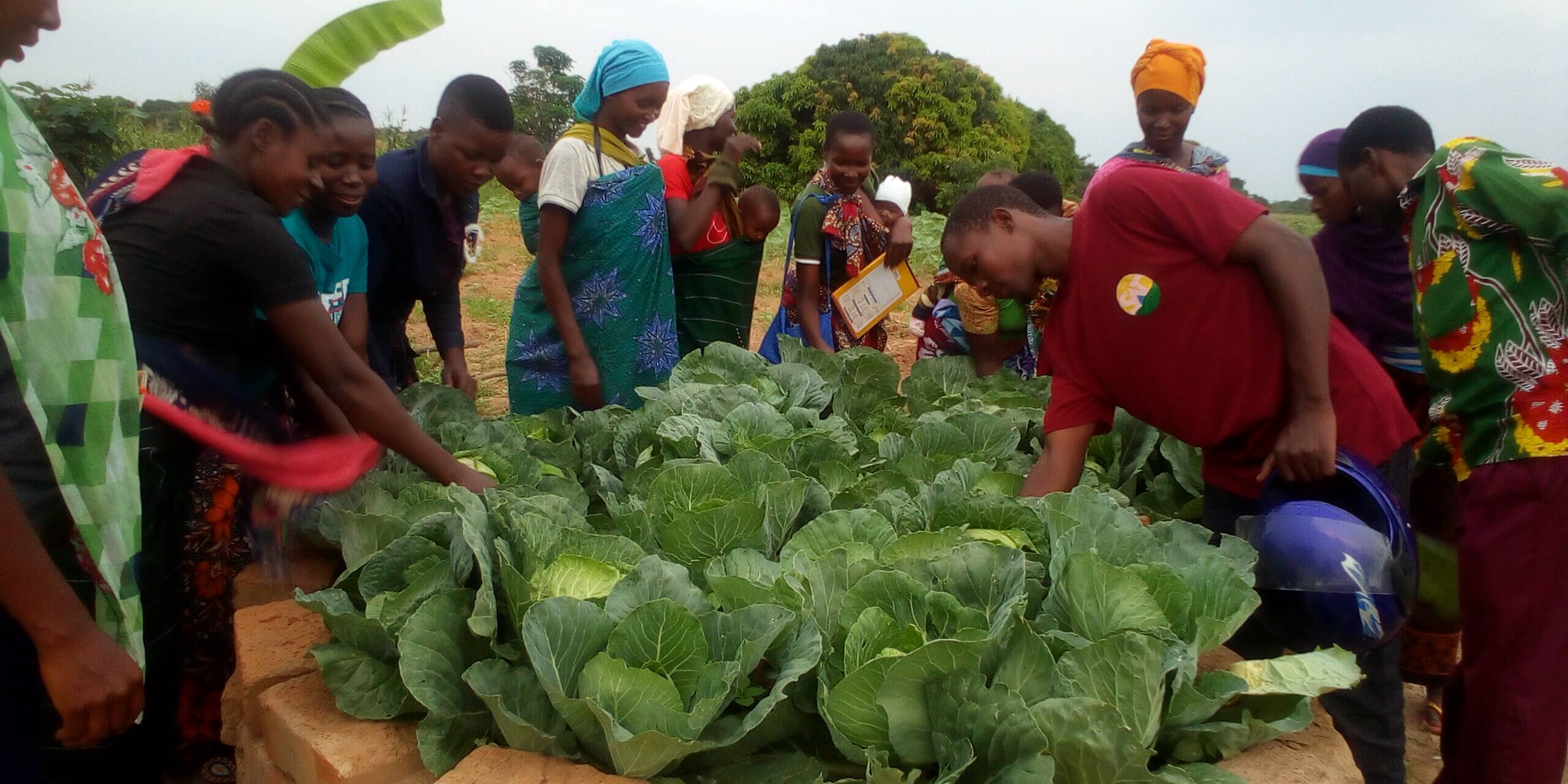Tackling Global Food Challenges through local solutions and ingenuity

Garus Msimbe shares his experience of agroecological transformation in his community.
As the world braces for the challenge of feeding an estimated 9.1 billion people by 2050, innovative and sustainable farming approaches like agroecology are no longer just options; they are imperatives. Thus, it is time we adapt to new farming practices that could produce more food in a sustainable way. This all begins with everyone playing their part. Small-scale farmer Garus Jovin Msimbe sees this bigger picture and plays a part on this larger narrative of resilience and innovation.

By 2018, villagers from Lusanga village in Mvomero, Morogoro formed a farmers group called Tuanzeni Farmers Group under the guidance of the late Mzee Hugo from Sustainable Agriculture Tanzania (SAT), who was a senior facilitator in many different project areas where SAT is operating. The group was formed after the introduction of the Farmers and Pastoralist Collaboration (FPC) Project which is kindly supported by the Biovision Foundation in the village meeting, were some of the farmers like Garus agreed and started right away with implementation on their demonstration farm. The idea was farmers around Lusanga village to learn and use agroecological practices that are both productive and natural resource conserving, but that are also culturally sensitive, socially just and economically viable.
Garus embodies the resilience and innovation of a small-scale farmer adapting to changing times. They embark on this transformative journey not only to learn about sustainable farming practices like crop rotations, composting, and mulching, but rather apply what is already well defined in their area, understand how ecosystems are organised and function, and extend their farming system to be more productive. But other lessons they learned did not end there, they also learned broader aspects like saving, lending, and income generation to help them as well to increase their capital.

The Evolution of Farming Practices: Adapting to Change
Initially they were focusing on vegetable production in 2018, the group shifted to onions in 2019 and later to more profitable and practical seasonal crops like maize, beans, and sunflowers. Garus reflects on the challenges they faced,
"For vegetables, the distance to the market posed a big problem. But shifting to seasonal crops was a game-changer for us."
A Testament to Success: Agroecological Techniques in Action
5 acres of his 15 acres farm are already intensively under agroecological production thanks to the training on the field and at SAT’s Farmer Training Centre (FTC) in Vianzi. His farm is seen surrounded with Moringa and Gliricidia trees which act as a border demarcation and for biofertilizers and compost making.
The impact is evident: "Before, I used to harvest 10-20 sacks of maize. Now, by applying the techniques learned, like proper land use and crop rotation, I harvest up to 50 sacks. It's not just about quantity; it's about the quality of food we produce and the health of our land," Garus proudly states

Building Climate Resilience: Innovations on the Farm
Garus also approaches farming in response to the challenges posed by climate change. He employs intercropping with beans and pumpkins to conserve soil moisture, uses mulching techniques, and has invested in a water pumping machine to combat during dry season. His efforts not only ensure his farm's sustainability, but also contribute to the community's food security.
"We've learned to work with nature, not against it. Using biopesticides and compost improves our soil and keeps our crops healthy," he explains.
Expanding Horizon
Garus's journey doesn't stop at crop farming. He has ventured into pig production, demonstrating the versatility and adaptability of agroecological methods. This expansion not only diversifies his income sources, but also contributes to the sustainability of his farming ecosystem.

Garus' story proves what many studies of sustainable farming practices have shown on various sustainability metrics like crop richness, abundance and soil fertility (Kremen and Miles 2012). As he looks to the future, he sees a landscape where agroecology is not just a practice but a way of life.
"We are not just growing crops; we are growing a future for our children and our community," he concludes with a hopeful smile.
Conclusion: A Model for Sustainable Farming
Garus Msimbe and the Tuanzane Group represent a growing movement towards sustainable agriculture. Their story is a compelling testament to the power of agroecological practices in addressing global food production challenges while ensuring the health and sustainability of our planet. They stand as an inspiration, showing that with knowledge, innovation, and community, a sustainable future is not just a dream but a reachable reality. As a small-scale farmer, Garus contributes to food production and plays his role in producing healthier food, improving his living standards as he is the father of four children and a husband, while also protecting his land and environment for the future generations. He has managed to build his own house and support his family financially through agriculture.

The FPC Project is kindly supported by the Biovision Foundation.







